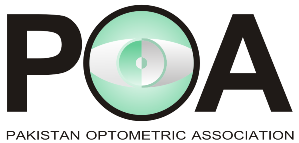Job Descriptions approved by the National Steering Committee for the prevention and control of blindness in Pakistan.
Ophthalmic Technician (Level I)
Minimum of one year time training in an accredited institution.
should make an important team member with the ophthalmologist;
note down the presenting complaints of the patients;
Ask the patient about common systemic diseases like diabetes, hypertension;
Ask the patient about the family history of common eye and systemic disease
(cataract, glaucoma, corneal, diabetes and hypertension)
Ask the patient about the use of any drug and allergy or hyper-sensitivity to any drug;
Detection and referral of common causes of blindness and visual impairment;
Health education and counseling;
Prescribe Vitamin A capsule/drops and Tetracycline, as appropriate;
Can use mydratics and local anesthetic with caution and responsibility
as advised by ophthalmologist;
Can remove superficial conjunctival foreign bodies
Can assess visual acuity for near and far, use pinhole, measure IOP,
and use of auto-refract meter;
Assist the Ophthalmologist in the operation theater and out-patient department;
Basic care and maintenance of ophthalmic equipments;
Maintain the record of ophthalmic unit manually and computerized;
Participation in community based eye health programs like school eye health,
trachoma control program, prevention of childhood blindness program etc.
Refractionist (Level II)
Minimum of two years full time training in an accredited institution
Can perform all the functions of level I;
Carry out refraction of all patients whose visual acuity improves with pinhole;
Assess the refractive state of a child 3 years and above using cycloplegic agent;
Basic vision function assessment including assessment of visual fields, contrast
and binocular visual function; contrast sensitivity
Screening of ocular pathologies at out patient department/ field and referral to
appropriate specialist;
Be able to carry out basic fundus examination using a direct Ophthalmoscope.
Performs any other relative assignment by the department;
Maintain records of ophthalmic unit and reporting;
Supervise school and community eye health screening programmes;
Coordinate and impart training to primary health workers and teachers;
Contribute to the eye health promotion activities;
Contribute to eye health and blindness surveys;
Carry out basic low vision assessment and prescribe LVDs from a defined range.
Optometrist (Level III)
Minimum of four year's full time training leading to
a university degree in an accredited institution
World Council of Optometry (WCO) defines optometrist as follows:
Optometrists are the primary health care practitioners of the eye and
visual system who provide comprehensive eye and vision care, which
includes refraction and dispensing detection/diagnosis and management of
diseases in the eye, and the rehabilitation of conditions of the visual system."
In the light of the above, the following job description is recommended for Pakistan.
Can perform all the functions of level II
Can perform the additional skills acquired:
Advanced refraction including refraction of all children
Low vision assessment
Prescribe hard and soft contact lens
Carry out advance visual function assessment
Detection/diagnosis and referral of diseases of eye
Can act as faculty member and trainer for level I and I
and other relevant cadres
Engage in operational and field research;
manage record keeping, analysis, and reporting;
Participate and lead on various eye campaigns.
Orthoptists (Level III)
Orthoptic assessment and non surgical management;
Visual function assessment especially in children;
Pediatric refraction / assessment including cycloplegic refraction;
Engage in research related to BSV anomalies;
Performs any other relevant field of expertise;
Record keeping and reporting.
Ophthalmic Technologist (Level III)
Assist ophthalmologist in LASER;
Perform the Diagnostic procedures like FFA (in presence of a doctor), A& B-Scan
Biometry, Perimetry Electrophysiological test and any other non-invasie advanced diagnostic procedures.
Maintenance of instrument & equipments.
Engage in operational and field research;
Teaching and training in the relevant field;
Perform any other relevant assignment by the department;
Record keeping an
Muhammad Rashid
Optometrist
Contact Lens Clinic
Al-Shifa Trust Eye Hospital
Rawalpindi
Pakistan
+923332645162
